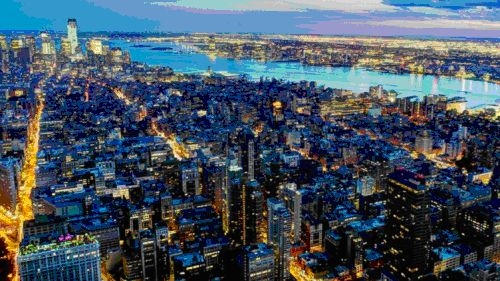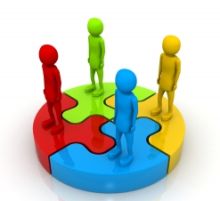Social Media Generates Social Capital: Implications for City Resilience and Disaster Response

A new empirical and peer-reviewed study provides “the first evidence that online networks are able to produce social capital. In the case of bonding social capital, online ties are more effective in forming close networks than theory predicts.”
Entitled, “Tweeting Alone? An Analysis of Bridging and Bonding Social Capital in Online Networks,” the study analyzes Twitter data generated during three large events: “the Occupy movement in 2011, the IF Campaign in 2013, and the Chilean Presidential Election of the same year.”
What is the relationship between social media and social capital formation? More specifically, how do connections established via social media—in this case Twitter—lead to the formation of two specific forms of social capital, bridging and bonding capital? Does the interplay between bridging and bonding capital online differ to what we see in face-to-face world interactions?
“Bonding social capital exists in the strong ties occurring within, often homogeneous, groups—families, friendship circles, work teams, choirs, criminal gangs, and bowling clubs, for example. Bonding social capital acts as a social glue, building trust and norms within groups, but also potentially increasing intolerance and distrust of out-group members. Bridging social capital exists in the ties that link otherwise separate, often heterogeneous, groups—so for example, individuals with ties to other groups, messengers, or more generically the notion of brokers. Bridging social capital allows different groups to share and exchange information, resources, and help coordinate action across diverse interests.” The authors emphasize that “these are not either/or categories, but that in well-functioning societies the two types or dimensions develop together.”

The study uses social network analysis to measure bonding and bridging social capital. More specifically, they use two associated metrics as indicators of social capital: closure and brokerage. “Closure refers to the level of connectedness between particular groups of members within a broader network and encourages the formation of trust and collaboration. Brokerage refers to the existence of structural holes within a network that are ’bridged’ by a particular member of the network. Brokerage permits the transmission of information across the entire network. Social capital, then, is comprised of the combination of these two elements, which interact over time.”
The authors thus analyze the “observed values for closure and brokerage over time and compare them with different simulations based on theoretical network models to show how they compare to what we would expect offline. From this, they provide an evaluation of the existence and formation of social capital in online networks.”
The results demonstrate that “online networks show evidence of social capital and these networks exhibit higher levels of closure than what would be expected based on theoretical models. However, the presence of organizations and professional brokers is key to the formation of bridging social capital. Similar to traditional (offline) conditions, bridging social capital in online networks does not exist organically and requires the purposive efforts of network members to connect across different groups. Finally, the data show interaction between closure and brokerage goes in the right direction, moving and growing together.”
These conclusions suggest that the same metrics—closure and brokerage—can be used to monitor “City Resilience” before, during and after major disasters. This is of particular interest to me since my team and I at QCRI are collaborating with the Rockefeller Foundation’s 100 Resilient Cities initiative to determine whether social media can indeed help monitor (proxy indicators of) resilience. Recent studies have shown that changes in employment, economic activity and mobility—each of which is are drivers of resilience—can be gleamed from social media.
While more research is needed, the above findings are compelling enough for us to move forward with Rockefeller on our joint project. So we’ll be launching AIRS in early 2015. AIRS, which stands for “Artificial Intelligence for Resilient Societies” is a free and open source platform specifically designed to enable Rockefeller’s partners cities to monitor proxy indicators of resilience on Twitter.
This article was originally posted on iRevolution Blog on December 3, 2014 (http://irevolution.net/2014/12/03/social-media-generates-social-capital/)
————————————————————————————————————————————————————————————————————————————————-
Patrick Meier is an internationally recognized thought leader on humanitarian technology and innovation. Author (2015): “Digital Humanitarians: How Big Data is Changing Humanitarian Response.” Previously: Harvard Humanitarian Initiative, United Nations, World Bank. Currently: QCRI. PhD from Fletcher School, Pre-Doctoral Fellow at Stanford and MA at Columbia. Born & raised in Africa.
Follow on Twitter: @patrickmeier









